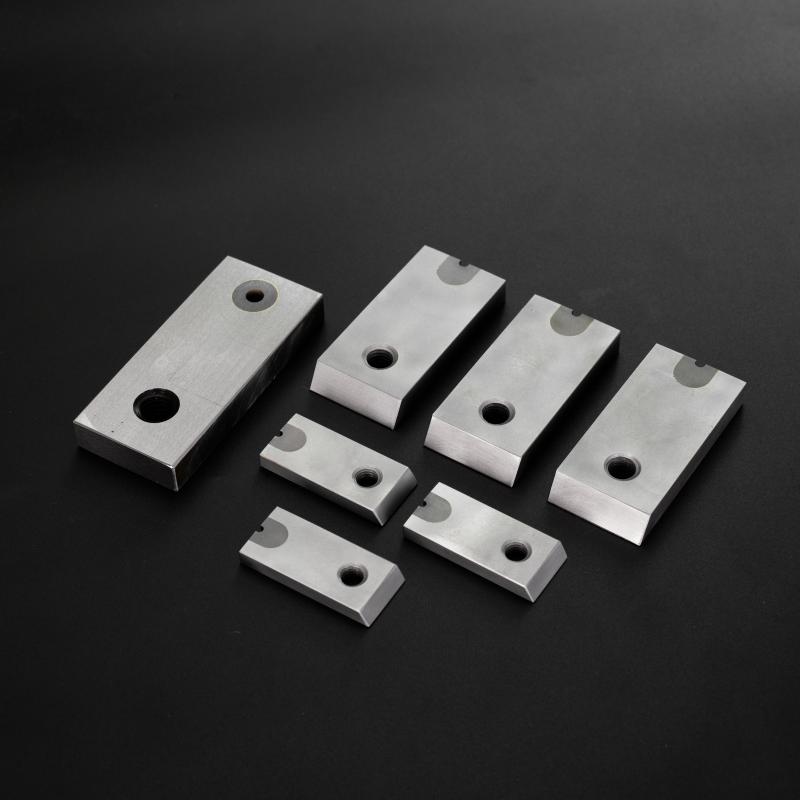In the era of advanced manufacturing, efficiency, precision, and adaptability are crucial factors driving production processes. Cut-off blades, renowned for their reliability and versatility, have become indispensable in automated production lines. By integrating cut-off blades with robotics and automated systems, manufacturers can achieve unparalleled precision and speed in cutting operations. This article delves into the critical role of cut-off blades in automation and explores how robotic integration elevates their performance to new heights.

Cut-Off Blades: A Pillar of Automated Cutting Systems
Cut-off blades are designed for separating materials with precision and efficiency. In automated production lines, they serve as the core cutting tool for diverse applications, such as:
1.Metal Cutting: Used in automotive, aerospace, and metal fabrication industries for cutting rods, pipes, and sheets.
2.Plastics and Composites: Essential in industries producing plastic molds, composite panels, and packaging materials.
3.Wood and Paper Processing: Commonly utilized in carpentry and paper mills for high-speed, precise cutting.
The robust nature of cut-off blades, combined with their ability to maintain sharpness over extended use, makes them ideal for high-throughput environments.
Integration of Robotics and Cut-Off Blades
The combination of robotics with cut-off blades represents a significant leap in manufacturing automation. Here's how robotic systems enhance the functionality of cut-off blades:
1. Precision in Material Handling
Robotic arms equipped with sensors can position materials with micrometer-level accuracy, ensuring that each cut aligns perfectly with the desired specifications. This precision is particularly vital in industries like electronics and medical devices, where even minor deviations can compromise product quality.
2. Enhanced Cutting Speed
By automating material feeding and blade positioning, robotic systems minimize downtime between cuts. This continuous operation significantly boosts production rates while maintaining consistent quality.
3. Complex Cutting Patterns
Robotic systems can maneuver materials or the blade itself to execute intricate cutting patterns, expanding the scope of cut-off blade applications beyond straight cuts to curves, angles, and complex geometries.
4. Real-Time Adjustments
With the integration of AI and machine learning, robots can adapt to variations in material properties, blade wear, or environmental conditions. This ensures optimal cutting performance without manual intervention.
Key Advantages of Cut-Off Blades in Automated Systems
1.Efficiency: High-speed automation reduces labor costs and improves throughput.
2.Consistency: Robots ensure uniform cuts, eliminating variability caused by manual operations.
3.Safety: Automation reduces direct human interaction with blades, minimizing workplace injuries.
4.Material Optimization: Precision cutting reduces waste, lowering material costs and environmental impact.
Applications in High-Efficiency Manufacturing
Cut-off blades integrated with automated systems find applications across various industries:
1.Automotive: Cutting chassis components, drive shafts, and exhaust pipes with speed and precision.
2.Electronics: Slicing silicon wafers, PCB boards, and other delicate materials.
3.Construction: Cutting rebar, concrete, and other building materials.
4.Textiles and Packaging: Streamlining the cutting of synthetic fabrics, films, and packaging materials.
Challenges and Innovations
Despite their advantages, integrating cut-off blades into automated systems poses challenges, such as blade wear, heat generation, and maintenance. However, innovations are addressing these issues:
1.Advanced Coatings: Heat-resistant and anti-wear coatings extend blade life.
2.Smart Monitoring Systems: Sensors track blade performance, enabling predictive maintenance.
3.High-Speed Automation: Enhanced motors and controllers increase cutting speed without sacrificing precision.
Future of Cut-Off Blades in Automation
As manufacturing technology advances, the role of cut-off blades in automated systems will continue to grow. Key trends include:
1.Collaborative Robots (Cobots): Working alongside humans to improve flexibility and efficiency in cutting operations.
2.Digital Twins: Virtual simulations of cutting systems to optimize blade performance and reduce downtime.
3.Green Manufacturing: Development of eco-friendly blades and systems that consume less energy and produce minimal waste.
Cut-off blades are a cornerstone of modern automated production lines, enabling precision and efficiency across diverse industries. By leveraging robotic systems and intelligent controls, manufacturers can unlock the full potential of these tools, achieving higher productivity, reduced costs, and improved quality. As automation technologies continue to evolve, cut-off blades will remain at the forefront of cutting innovation, shaping the future of manufacturing.








